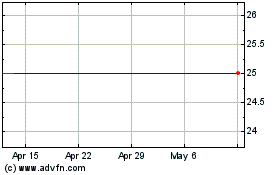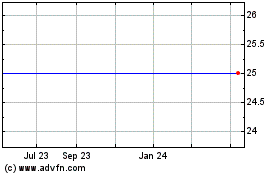Only 30% of subscribers are aware of risks posed by mobile network vulnerabilities
December 12 2016 - 10:00AM

Research commissioned by Xura, Inc, a leading provider of secure,
digital communications services, has revealed the extent to which
mobile subscribers are unaware of vulnerabilities in their mobile
operator’s network that could lead to their calls or texts being
intercepted, so becoming victims of fraud or unauthorized location
tracking. Only 30 percent of respondents to the survey – conducted
with consumers in the US, UK and Australia – claimed awareness of
any security weakness in mobile phone networks.
Respondents provided a list of reasons for their security
concerns including vulnerabilities in operating systems (nine
percent), apps (six percent), operator data leaks (three percent)
and vulnerabilities in Bluetooth, WiFi, and voicemail hacking.
However, only six percent indicated specific awareness of
vulnerabilities in the technology of the telecoms network
itself.
Mark Windle, Strategy and Marketing Director, Xura Security,
said: “SS7 (Signaling System 7) is a core technology used by
telecoms networks globally. SS7, however, contains
vulnerabilities that can be exploited to carry out a whole host of
malicious activities; from triggering fraudulent calls or texts to
be sent to premium rate services at the subscriber’s expense, to
location tracking and call/SMS interception. The threat is very
real, but thankfully so too is the solution. Xura is actively
helping operators around the world to secure their networks and
protect their customers. Naturally some operators move faster than
others and those that are yet to act will know the consequences of
not protecting themselves and their subscribers against potential
attacks. Securing their networks should be the highest
priority.”
Shockingly, almost a third (32 percent) of mobile subscribers
never check their balance or bill to verify that they have been
correctly charged or to detect possible suspicious activity on
their account, with those aged between 31 and 50 least likely to
check their monthly bills.
“Often these attacks can happen without the mobile user’s
knowledge. With fraud, the only indicator may be on the
subscriber’s bill. However, we appear to have considerable faith in
mobile operators, hence why many of us may not think to suspect any
inaccuracies in bills: according to the research over two thirds
(69 percent) of subscribers questioned feel they are moderately
well protected by their service provider from fraudsters and
hackers. Until the network is properly secured, the operator is
putting this significant amount of customer loyalty at risk,”
continued Windle.
In terms of which hacks would affect subscribers the most, over
half of subscribers felt like they would be severely or badly
affected by a denial of service attack (58 percent), fraudulent
calls and SMS subscriptions respectively (52 percent). Fraud is
also the type of hack that subscribers feel is most likely to
happen to them, with 45 percent anticipating becoming a victim of
fraudulent calls made at their expense, and fraudulent registration
for premium SMS services (38 percent).
Subscribers also indicated that if they became a victim of
mobile cybercrime, nearly half (49 percent) would seek compensation
from their mobile network operator and a third (33 percent) would
inform the telecom regulator. Worse still, 29 percent would change
their network provider either immediately (22 percent) or at the
next renewal date (seven percent).
Windle added: “SS7 attacks leading to fraud are likely to impact
subscribers the most, and with consequential impact for the network
operators in the form of compensation claims or the loss of angry
subscribers to competitors. With security becoming a priority for
consumers and enterprises alike, operators have an opportunity to
become the trusted provider by moving quickly to combat potential
exploitation. By implementing a comprehensive solution that is
powerful enough to secure all points of attack, not only blocking
suspicious activity but also using advanced analytics to help
secure the network against future attacks, the operator can detect,
protect and secure their network assets, data and ultimately their
subscribers.”
Other key findings:
- 22 percent of subscribers don’t implement any rules when they
decide to grant apps permission to access other features or data on
their phone
- Only eight percent would switch to apps to make calls and send
messages more securely than through traditional voice calls and SMS
messages
- 24 percent would change their number if attacked
- 14 percent would report the hack on their social networks
“Despite a reasonable degree of awareness to potential threats,
many subscribers (42 percent) increase their exposure to risk by
not checking bills or not paying attention to app permissions. As
subscribers, we need to take more care and be more vigilant.
However, cybercrime conducted through SS7 vulnerabilities in the
network may be completely invisible to consumers. The right place
to tackle these threats is in the network, but right now many
networks are not adequately protected from potential signaling
attacks. Now is the time for the operators to join the fight
against cybercrime,” concluded Windle.
To highlight the findings of the research, Xura created an
infographic which explores the rise of mobile cybercrime, how
mobile users are at risk, often without their knowledge, and some
practical tips everyone can take to better protect themselves. To
view the infographic, please click here:
http://bit.ly/MobileCybercrime
About the researchCarried out in Quarter Three
2016, the research was conducted by Xura via Survey Monkey, and
questioned 1,667 mobile network subscribers in the USA (595), UK
(535), and Australia (537). A breakdown of findings by country are
available on request.
About Xura, Inc.Xura, Inc. offers a portfolio
of digital services solutions that enable global communications
across a variety of mobile devices and platforms. We help
communication service providers and enterprises navigate and
monetize the digital ecosystem to create innovative, new
experiences through our cloud-based offerings. Our solutions touch
more than three billion people through 350+ service providers and
enterprises in 140+ countries. You can find us at
Xura.com.
Media Contact:
Maria Hudson
Xura
maria.hudson@xura.com
Xura, Inc. (NASDAQ:MESG)
Historical Stock Chart
From Oct 2024 to Nov 2024

Xura, Inc. (NASDAQ:MESG)
Historical Stock Chart
From Nov 2023 to Nov 2024
